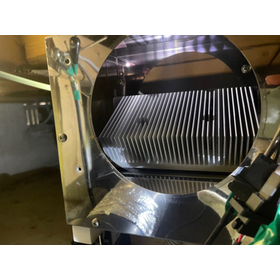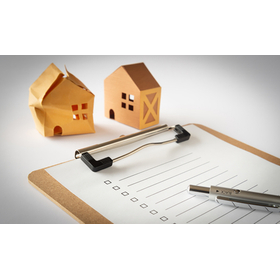- Publication year : 2025
1~7 item / All 7 items
Displayed results
Added to bookmarks
Bookmarks listBookmark has been removed
Bookmarks listYou can't add any more bookmarks
By registering as a member, you can increase the number of bookmarks you can save and organize them with labels.
Free membership registration
Contact this company
Contact Us OnlineBefore making an inquiry
Download PDF1~7 item / All 7 items

This is a report on the inspection results after approximately two and a half years of using the Dry Pro Type-C in the newly added crawl space (foundation packing method) created during the renovation. The inspection results showed that there was no dust or other substances adhering to the heat dissipation fins of the dehumidifier, the dehumidifying fins, the intake ports of the blower, or the fan, which could negatively affect performance. Additionally, there were no foreign objects or dust adhering to the drain hose for dehumidified water or the pump tank that could adversely impact performance, and all components were functioning normally. (Photo: Heat dissipation fins of the dehumidifier) The newly added crawl space was located on the north side in a poorly ventilated area, but no signs of mold or condensation were observed, confirming that a dry state was maintained. (Photo: Installation status) Please be sure to read the [related materials] and [related links]. ↓ ↓ ↓
Added to bookmarks
Bookmarks listBookmark has been removed
Bookmarks listYou can't add any more bookmarks
By registering as a member, you can increase the number of bookmarks you can save and organize them with labels.
Free membership registration
The heat indoors may be caused by "heat trapped in the attic." In the summers of 2024 and 2025, extreme heat is expected to exceed 35°C on consecutive days, becoming the norm. Even with air conditioning running at full capacity, are you experiencing issues like "the second floor is unusually hot" or "the room temperature doesn't drop at night"? One of the causes of this is the heat trapped in the attic. When direct sunlight hits the roof, the temperature in the attic can reach nearly 70°C, compared to an outside temperature of 35°C. This heat radiates into the living space, raising indoor temperatures, reducing the efficiency of air conditioning, and potentially leading to increased electricity bills and negative health effects. ■ Start now! Efficient heat countermeasures with "attic ventilation" ■ Now is the perfect opportunity to install it ahead of the summer peak ■ Attic ventilation is not just for summer * The attic ventilation system by Kazenosuke24 is effective not only for summer heat measures but also for winter condensation prevention. Please take a moment to read the [related materials] and [related links]. ↓ ↓ ↓
Added to bookmarks
Bookmarks listBookmark has been removed
Bookmarks listYou can't add any more bookmarks
By registering as a member, you can increase the number of bookmarks you can save and organize them with labels.
Free membership registration
It's concerning when your child has to stay home alone. In such cases, the self-monitoring security system Life Defense protects your child with its "home security" feature. It's easy to operate, so even small children can use it. Additionally, by using the optional internet camera, you can view the situation inside the room and communicate via your smartphone. (The internet camera requires an environment where the internet can be used at the installation location.) 【Table of Contents】 1. Peace of mind while at home: "Home Security Function" ~ When your child is home alone, it's home security. ~ ~ Even when you're at home, burglars may be targeting you. ~ 2. If you feel uneasy: "Emergency Notification Function" ~ With one push, you can alert those monitoring to an emergency. ~ 3. Summary ~ Child monitoring features (Home Security + Emergency Notification) ~ ✅ Home Security Function ✅ Internet Camera (Optional) ✅ Emergency Notification Function ✅ Points Please be sure to read the 【related materials】【related links】. ↓ ↓ ↓
Added to bookmarks
Bookmarks listBookmark has been removed
Bookmarks listYou can't add any more bookmarks
By registering as a member, you can increase the number of bookmarks you can save and organize them with labels.
Free membership registration
■Live Inspection Start Our company conducts inspections to provide our clients with a deeper understanding of the effectiveness, safety, and installation information of the products they sell. This includes visits to our simulation studio, experimental laboratory, test house, and production line. By observing the visualization of product effects, safety tests, and durability testing scenes, we have received feedback such as "I gained a deeper knowledge of the products" and "I can confidently propose to end users." We are pleased to announce the launch of our 'Remote Live Inspection Service,' focusing on smoke simulation and security systems, which are the main features of our inspections. Considering feedback such as "I am interested, but it's difficult to come all the way to Fukuoka" and "It's hard to coordinate schedules for multiple people," the content will be a condensed version, but we will ensure interactive communication similar to an in-person visit. 【Flow of Remote Inspection】 ■ For underfloor ventilation... Approximately 30 minutes ■ For security... Approximately 20 minutes ■ Q&A... About 10 minutes
Added to bookmarks
Bookmarks listBookmark has been removed
Bookmarks listYou can't add any more bookmarks
By registering as a member, you can increase the number of bookmarks you can save and organize them with labels.
Free membership registration
In homes where "flooding under the floor" has occurred due to heavy rain, various damages and risks of secondary damage are lurking in unseen areas. To protect the durability of the house and the health of the family, we have organized the points that should be prioritized for inspection and action. 【Table of Contents】 1. Why is inspecting under the floor essential? 2. 【Emergency Checkpoints】First, check here! A. Presence of flooding or moisture B. Condition of the wood C. Presence of unusual odors D. Signs of termites or pests E. Condition of ventilation openings 3. Immediate response methods upon discovering damage - Mild situations with little water pooling or moisture - - Situations with water pooling and concerns about structural impact - The damage from flooding under and above the floor due to heavy rain requires significant recovery efforts, including cleanup. We extend our heartfelt sympathies to all those affected. Please be sure to read the 【related materials】【related links】. ↓ ↓ ↓
Added to bookmarks
Bookmarks listBookmark has been removed
Bookmarks listYou can't add any more bookmarks
By registering as a member, you can increase the number of bookmarks you can save and organize them with labels.
Free membership registration
"Because it's an invisible place, we won't overlook it." Japan's climate is characterized by high temperatures and humidity, and particularly after typhoons and heavy rains, the conditions can be harsh for homes. It's not just the roofs and exterior walls that are affected by rain and wind. The area beneath the floor is actually the most susceptible and often overlooked point. This time, we will explain the "checkpoints for under the floor" that should be confirmed after a typhoon or heavy rain, the "responses" if abnormalities are found, and measures for preventing recurrence. [Table of Contents] ■ Why is underfloor checking necessary? ■ Checkpoints to confirm after a typhoon or heavy rain ■ Responses when damage is discovered ■ Points for preventing recurrence ■ Suggestions from Seihou Products ■ Summary Please be sure to read the [related materials] and [related links]. ↓ ↓ ↓
Added to bookmarks
Bookmarks listBookmark has been removed
Bookmarks listYou can't add any more bookmarks
By registering as a member, you can increase the number of bookmarks you can save and organize them with labels.
Free membership registration
Some of you may be wondering whether to introduce the effective equipment "underfloor ventilation fan" for pest control under the floor and to prevent the deterioration of the foundation (moisture control). Why is ventilation under the floor necessary? We have created a page that clearly summarizes the effects of forced ventilation and installation. The area of openings required under the floor is specified by the Building Standards Act. In short, this means that you must provide a certain area of ventilation openings for moisture control under the floor. However, when looking at single-family homes, you will find that there are always ventilation openings, whether they are square grilles or full-perimeter ventilation foundation packing methods, although the types may differ. In recent years, homes with foundation insulation methods (especially in northern regions like Hokkaido) have also been built, but in this foundation insulation method, the underfloor is connected to the interior, and the underfloor is considered part of the interior, so there are no ventilation openings under the floor to prioritize insulation effectiveness. The adoption rate of the foundation insulation method is still low, but moisture issues are not nonexistent. I would like to touch on this at another opportunity. Please be sure to read the 【related materials】 and 【related links】. ↓ ↓ ↓
Added to bookmarks
Bookmarks listBookmark has been removed
Bookmarks listYou can't add any more bookmarks
By registering as a member, you can increase the number of bookmarks you can save and organize them with labels.
Free membership registration